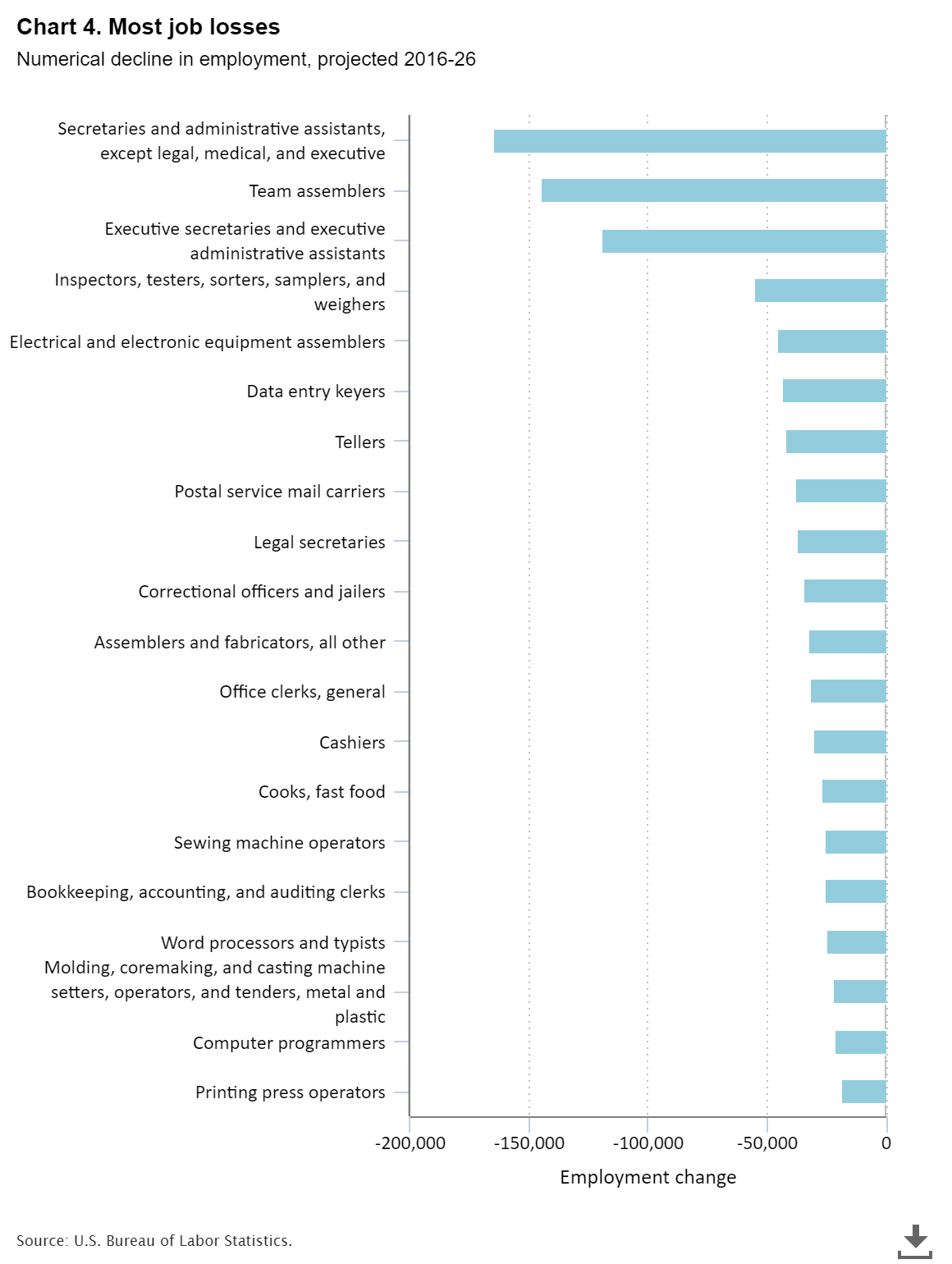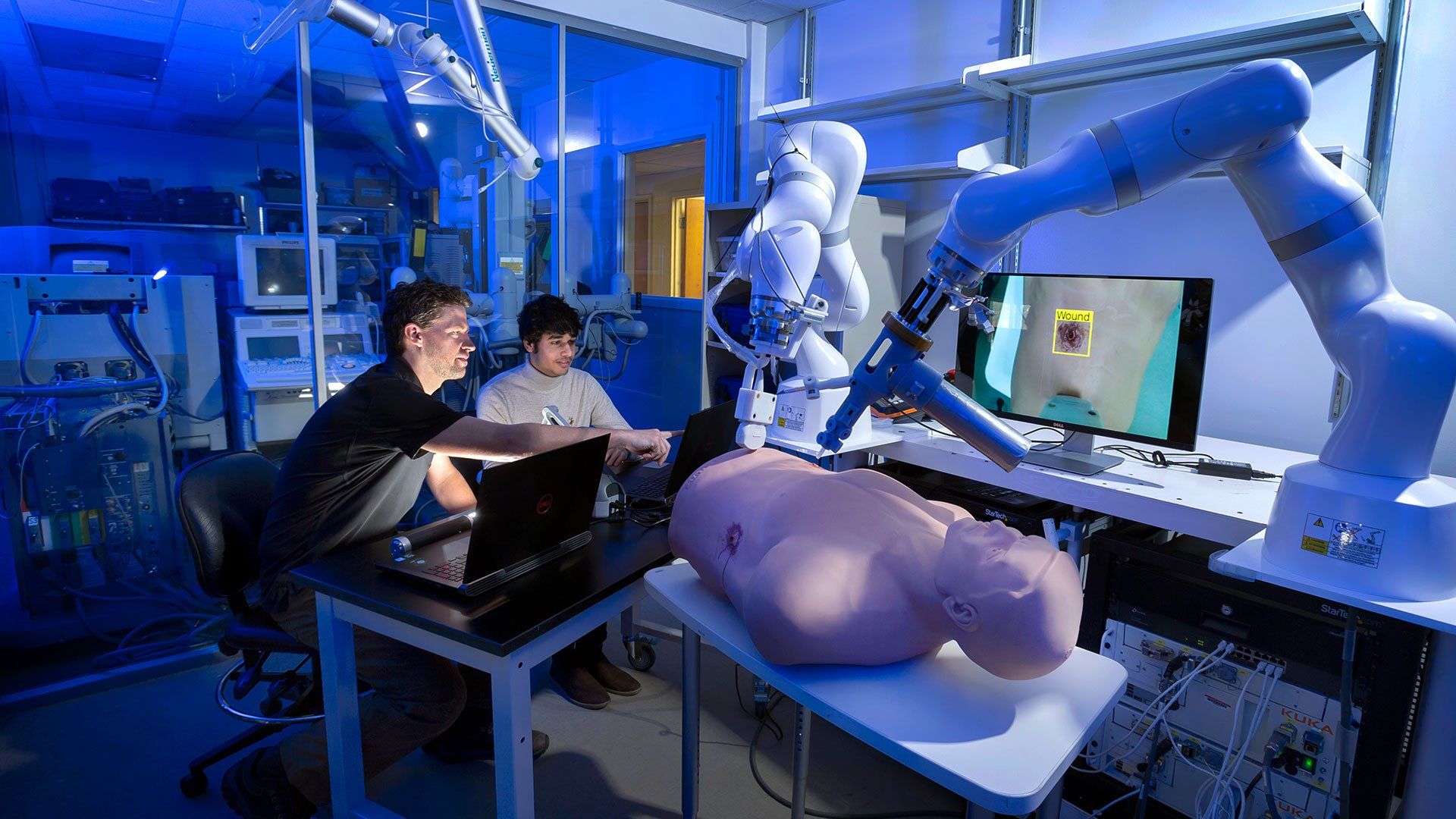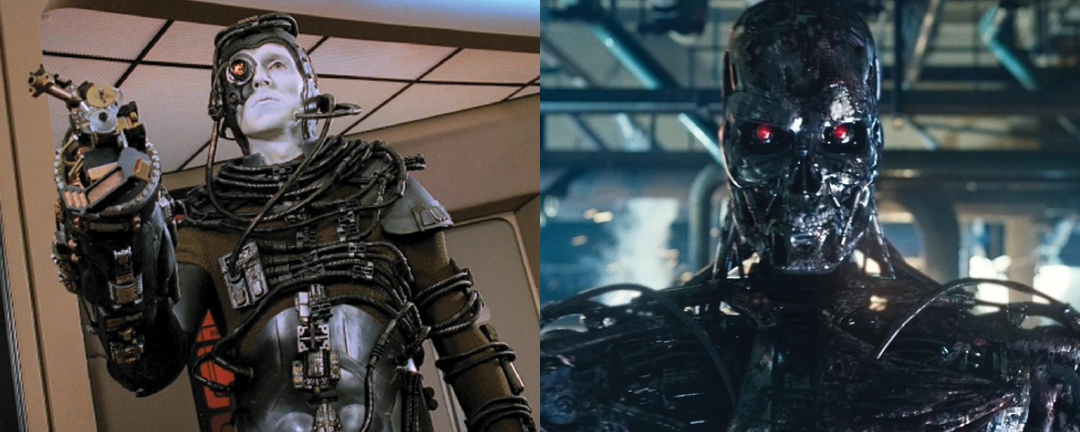The Robots Are Coming, but This Time Really Can Be Different.
Preparing Our Workforce for the Next Technological Disruption
City Tech accelerates technology-enabled solutions that address society’s
most challenging urban problems, and in doing so, makes our lives happier,
healthier, and more productive. We are successful when we help our partners use
new and emerging technologies to disrupt
our environment. These
disruptions unlock capabilities that enhance our infrastructure, make our
services more efficient, and reduce costs, all with the ultimate goal of
improving our well-being. However, history has shown that widescale adoption
of new technological solutions will displace workers whose occupations are
dependent on the old conditions, resulting in unintended economic, health, and
social consequences
( 1).
The automobile, telephone, and computer are popular examples of
inventions that ushered in societal-level creative destruction by replacing
horse carriages, telegraphs, and typewriters. These technologies created rewarding
opportunities for future mechanics, technicians, and engineers, but they provided
little comfort to the blacksmiths, telegraph operators, and clerks who lost
their livelihoods ( 2).
The effects of technology-driven displacement create economic
“winners” and “losers” throughout society and exacerbate wealth and social
inequalities.
Those with high levels of education, in-demand technical skills,
and resources to withstand a temporary income loss are well-positioned to take
advantage of emerging employment opportunities. The negative effects are more
concentrated in certain segments of our population, and the short-term options
available to replace the lost jobs (such as work in agriculture, retail,
services, and entertainment filled with routine tasks) are often low-paid and
without substantial opportunities for career advancement. Black, Indigenous,
and people of color, as well as women, foreign-born workers and individuals
with low levels of education are the most vulnerable of getting trapped in
low-wage jobs with little prospects of economic mobility ( 3, 4).
More recent examples of technology-driven displacement include the
closure of a large number of brick-and-mortar retailers due to the rise in
e-commerce ( 5, 6, 7, 8, 9),
rideshare platforms devastating the taxi industry ( 10, 11, 12), and automation’s
contribution to the demise of low and middle-skilled manufacturing jobs ( 13, 14). The
most recent period of disruption has been especially painful for low-skilled
blue-collar workers who are most likely to be diverted into the growing number
of low-income service jobs. Since 2000, the high-paying manufacturing sector, which
traditionally has provided many families with stable middle-class incomes, went
from the largest employer nationally of lower-skilled workers to one of the
smallest ( 15, 16). A 2019
Brookings analysis estimates more than 53 million people can now be defined as
“low-wage workers,” or 44% of all workers ages 18-64 in the United States ( 17, 18).
Next, the Robots Come For You
The next wave of technological disruptions in fields such as
robotics, artificial intelligence (AI), telecommunications, autonomous
vehicles, and battery storage are still in their early stages. They have yet to
revolutionize entire industries, but if their advancements thus far are any
indication, high-paying and high-skilled white-collar jobs will not be
spared in the next round of displacement.
AI-enabled
software is not only replacing sales and customer support agents with chatbots
and self-checkout kiosks. It is also automating routine tasks in accounting,
law, financial services and even the detection of diseases in radiology ( 19
, 20
, 21
, 22
, 23
). Improvements
in telecommunications are providing more opportunities for the broad adoption
of online education and telemedicine, threatening displacement among teachers,
professors, and medical and health insurance professionals. Companies such as
TuSimple, Aurora, Daimler, Embark Trucks, HERE Technologies ( 24),
and Alphabet-owned Waymo are all working to fully automate shipping by building
self-driving freight trucks and navigation systems ( 25). Walmart
recently stated that they will start a pilot project to deliver grocery and
household products through automated drones ( 26). Robots
are cleaning our airports ( 27),
patrolling our buildings ( 28), and
performing more intricate tasks in slaughterhouses ( 29) and
surgical departments ( 30).
Given the prevalence of new technologies throughout the workforce,
dire predictions among experts
( 31), and poor
record of turbulent transitions in prior disruptive phases, it is no surprise
that there is widespread fear across
industries about jobs being eliminated as a result of a new technology ( 32, 33, 34).
We have
formidable challenges ahead of us that must be confronted with decisive,
robust, and collective action, but we are by no means destined to live at the
mercy of robot overlords in a future hunger- and poverty-stricken dystopia. The
challenges we face are also ripe with opportunities.
Telework will destroy some labor-intensive jobs in the education
and health care sectors ( 35), but the
proliferation of platforms such as Zoom, Microsoft Teams, and Cisco’s Webex are
also creating opportunities for individuals to take jobs across the country
that do not require them to work in-person. Medical advancements in robotics,
AI, 3D printing, diagnostic tests, and prosthetics will prolong lives and
create new jobs for specialists, physical therapists, occupational therapy
assistants, nurses, and health and personal aides ( 35). The
widescale application of artificial intelligence, autonomous vehicles, Internet-of-things
(IoT) devices, and robotics will increase demand for a host of occupations such
as data scientists, researchers, coders, software designers, computer
engineers, statisticians, mathematicians, technicians, information technology
specialists, cybersecurity experts, and new professions that are not yet known.
Improvements in battery storage will not only create new jobs in the automotive
industry and its supply chain but will also help accelerate renewable energies
such as solar and wind power, and with them, opportunities for solar
photovoltaic installers and wind turbine service technicians ( 36, 37, 38).
The movement toward more automation will displace many jobs, but
it could also increase productivity without causing high levels of long-term
unemployment if managed properly. A 2018 World Economic Forum report estimated
that by 2025 machines would perform half of all labor hours ( 39).
Machines will increasingly take over the routine white- and blue-collar tasks
that are mundane and susceptible to human error while allowing humans to focus
on the high-value tasks that require flexibility, context, problem-solving, creativity,
adaptability, interpersonal skills, and empathy ( 40, 41, 42).
Machine-automated tasks will replace many occupations of our aging population; despite
a declining workforce, increased machine-automated tasks may actually allow
developed countries to maintain or increase productivity levels ( 43).
Our responsibility is to acknowledge that without action to adequately manage a peaceful transition period, the next wave of disruption and displacement will cause significant and persistent unemployment and economic hardship. Minimally, a temporary increase in job turnover and partial unemployment is likely inevitable. Technology will upend millions of lives, including a higher percentage of previously safe higher-skill and high-paying white-collar jobs. Those who have already bore the brunt of previous disruptive periods – Black, Indigenous, people of color; women; and those with low levels of education – will remain the most vulnerable. However, we can take the necessary actions to prepare our workforce for the new opportunities that will arise and increase the resiliency of our social support systems to provide an orderly progression.
Preparing for the Future
An effective set of policies and programs can reduce anxiety,
uncertainty, and fear of the unknown as well as avoid the most tumultuous
economic, health, and social unrest scenarios.
Successful
elements of extensive workforce, education, and social support structures
already exist and are well documented by policy professionals and academic
researchers, but governments, employers, non-profit organizations, and
individuals all need to take responsibility for the changing environment to ensure
the integral components have sufficient resources and mechanisms in place to replicate,
coordinate, and scale into an effective national system.
DATA-DRIVEN DECISION-MAKING
First, we need to understand how the landscape is changing the
future job market and communicate this information to public leaders, educations,
employers, and job seekers. What jobs are most in decline and at-risk of being
replaced? What are the fastest growing jobs as well as those most likely to be
created? What are the skills associated with the jobs of the future, and which
skills are most transferrable across in-demand occupations?
Fortunately, it has never been easier to answer these critical
questions and provide stakeholders with accurate demand information and
labor-market insights.
Reports from institutions including the Bureau of
Labor Statistics, Deloitte ( 44
),
McKinsey ( 45
), and Georgetown’s
Center on Education and the Workforce ( 46
) consistently provide in-depth analysis
on these topics. Companies such as LinkedIn, GlassDoor, PayScale, and Burning
Glass also offer real-time labor-market data and analytics on occupations,
companies, skills, competencies, and salaries.
EDUCATION & WORKFORCE DEVELOPMENT PROGRAMMING
Next, we must take a comprehensive approach to prepare our
workforce to thrive in the future job market. Our secondary and
post-secondary institutions need to have the right curricula, support systems,
and employer partnerships to ensure our children and young adults can
seamlessly enter the workforce with the right skills to advance in their
careers
( 47
, 48
). There
is a substantial wage premium in the labor market for higher education ( 49
, 50
), but the
continuing decline in college enrollment represents a worrisome trend ( 51
).
A considerable barrier is the increasingly prohibitive cost of higher
education ( 52
, 53
), which
leaves many students entering an uncertain labor market with a crushing debt
burden ( 54
). As
technological shifts will call for jobs that machines cannot perform – those
that require flexibility, context, problem-solving, creativity, adaptability,
interpersonal skills, and empathy – we must make higher education more
accessible to ensure our future workforce is prepared. One potential solution
may be a shift to income sharing agreements (ISA), where the percentage a
graduate pays over a set number of years depends on factors such as their
major, the amount of funding they receive, and their future salary. For
example, Purdue University started offering a promising ISA known as the Back a
Boiler Program ( 55
), where graduates
make payments for about 10 years after graduation. The program was launched in
the 2016-17 academic year, and the fund has invested $13.8 million in Purdue
students from more than 150 undergraduate majors ( 56
).
We must also provide a different set of structures and programs for
existing workers, especially those most at-risk of displacement, with ample
resources and options for up-skilling and re-skilling into jobs with
higher-wages, greater financial stability, and opportunities for career
advancement.
A November 2019 report by Brookings ( 57
)
highlights examples of strategies and evidence-based programs that support
these objectives; for example, Project Quest in San Antonio provides financial
assistance, instruction, and counseling to assist individuals with occupational
training programs at local community colleges ( 58
), and the
state of Washington’s Integrated Basic Education and Skills Training (I-BEST)
is an integrated instruction model combining professional/technical content
with fundamental skills ( 59
, 60
, 61
).
ECONOMIC & SOCIAL POLICIES
Third, we need to be cognizant of the
barriers
that may prevent
individuals from taking advantage of new opportunities, especially the
challenges facing our most vulnerable workers who have been left behind in
previous waves of displacement and paid the greatest economic toll.
We can
implement economic development and social policies that will complement successful
education and workforce strategies, promote the growth of more high-paying
jobs, reduce catastrophic economic and public health shocks, and maximize the
full potential of our workforce.
We have finite resources to invest in our future, and the choices
we make have consequences. For example, the Tax Cuts and Jobs Act of 2017 was
meant to bolster economic growth by reducing taxes on households and companies,
thereby injecting money into the economy and spurring more capital investment
that would generate sustainable growth. After only a slight temporary bounce, the
most lasting effect has been a structural increase in the federal deficit ( 62
, 63
). Worse, the
majority of benefits that accrued went largely to the wealthiest households and
companies in an era with inequality levels last seen in the Gilded Age ( 64
, 65
, 66
). Rather
than boost wages or make transformative investments in human capital, a sizeable
amount of the corporate windfall went to stock buybacks, where companies reward
shareholders by repurchasing their own shares, thereby giving existing
shareholders a larger portion of the company and its earnings ( 67
, 68
, 69
, 70
, 71
, 72
, 73
, 74
, 75
, 76
). And
note: the top one
percentile
of households own half
of all
stocks.
An alternative approach could have used a fraction of the $1.5
trillion price tag – which was mostly financed by debt – to make investments in
community college programs that tailor job training to local employers,
manufacturing extension partnerships, improvements in infrastructure that lower
business costs, enhancing access to credit for economically disadvantaged
groups to start and grow businesses, and scaling best practices with high
returns on investment; such programs include the Accelerated Study
in Associate Program (ASAP) of the City University of New York (CUNY), which
helps students stay on track and graduate by providing comprehensive
wrap-around financial, academic, and personal supports ( 77
, 78
, 79
, 80
).
The American safety net and workplace regulations lag advanced
economies
in workforce protections, employee bargaining power, access to
affordable health insurance and care, unemployment insurance, and work-family
policies such as guaranteed paid sick leave, family leave, and maternity and
paternity leave for all workers ( 81
). As a
result, we lack adequate buffers to stabilize the financial and medical health
of families during bouts of economic insecurity, job loss, and displacement.
COVID-19-related layoffs exacerbated holes in the unemployment
system during the spring and summer of 2020 and overwhelmed antiquated state
unemployment insurance systems ( 82
, 83
), and an
increasing number of job losses appear to be permanent ( 84
, 85
).
However, we can learn from models such as Germany’s “Kurzarbeit” (which
translates to “short-time work”), a work-sharing program that has been credited
with preventing massive unemployment ( 86
). In
addition, we could expand utilization of short-time compensation plans that
already exist in 26 U.S. states and allow companies to avoid layoffs by
reducing hours for employees and then receiving pro-rated unemployment
insurance ( 87
).
RACIAL EQUITY & INCLUSION
Finally, the United States has experienced massive social turmoil and
large-scale demonstrations since George Floyd was killed in the custody of Minneapolis
police in late May 2020 ( 88
). Peaceful
protests, and in some instances rioting and looting, have continued as
additional deaths of Black Americans in police custody have highlighted
persistent discriminatory practices throughout law enforcement ( 89
, 90
, 91
, 92
). The
Black Lives Matter movement has also put a spotlight on racial inequality, a
lack of diversity, and discriminatory policies affecting Black Americans, as
well as Indigenous Americans and people of color, that are pervasive throughout
our workforce ( 93
, 94
, 95
, 96
). Of
America’s top 500 companies, only 1% - four to be exact – are run by Black
chief executives ( 97
).
Still, women,
Latino, and Black workers are all overrepresented among low-wage workers, and
there is sufficient evidence to suggest that their disproportionate share is
due to labor market discrimination ( 98
, 99
, 100
, 101
).
Simple policies can help increase the diversity of our workforce.
A “soft”
affirmative action policy that is easy to implement and could serve as a model
to increase the diversity of hires is the NFL’s “Rooney Rule,” which requires
an NFL team to interview at least one minority candidate for a vacant
head-coaching job, general manager position, or other front-office position.
One study found that during the Rooney era (established in 2003) a non-white
candidate is about 20 percent more likely to fill an NFL head coaching vacancy
than before it took effect ( 102
). A
similar study showed that hiring policies requiring the interviewing of
qualified Black candidates to reach a specific Black-to-white ratio for all
teachers in a Louisiana school district significantly increased the share of Black
teachers without any negative impacts on student achievement ( 103
).
We can do everything right to help our most vulnerable populations
for the next technological disruption
– use data to inform our decisions, educate
and train our workforce on the necessary skills, and implement economic
policies and social safety nets – but nothing will change if discrimination
continues to impede hiring decisions.
Structures and affirmative action requirements
can help facilitate upward mobility in our workforce, but ultimately, we must
dismantle the racism and systematic disparities that plague our businesses and
all aspects of life.
COLLABORATIVE EFFORT
As an urban solutions accelerator, City Tech works with our
partners to use new and emerging technology to disrupt the status quo for good.
Technology has the potential to solve complex problems, but new technology,
capabilities, and business models can have ripple affect across industries.
Working collaboratively across sectors and directly engaging residents
ensure
that we have a broad and deep understanding of the impact of these new
solutions, as well as provides the opportunity to address potential issues and
barriers at the forefront.
For example, the Chicago Health Atlas
is a
community health data resource composited of more than 30 sources that helps
identify urgent, unmet needs in underserved communities. Equipping residents,
community organizations, and public health stakeholders with data to make
informed decisions leads to more impactful solutions and ensures that we are
spending our limited resources appropriately. Similarly, City Tech’s Connect
Chicago Innovation Program
has supported collaborative, community-led
ideas to increase technology access, digital skills, and adoption across
Chicago. Through the program, award recipients have created an affordable and
accessible cybersecurity
workforce development program
for women and leveraged data to create a neighborhood-level
tool
to understand gentrification and the displacement of community
resources. Efforts such as these can serve as examples of high-impact
opportunities for governments, private and public companies, non-profits, and
individuals to work together to create better solutions.
Collaboration across sectors and intentional innovation can address
the impending disruptions to our workforce and their economic ramifications – working
in siloes is no longer an option.
Path Forward
Where does this leave us? First and foremost, we are left with a
choice. We can do nothing, maintain the status quo, and leave ourselves
woefully unprepared for the impending disruptions and displacement while
inequality continues to deepen throughout our society.
Technological innovations and automation will leave millions of workers
permanently unemployed or underemployed, languishing in low-wage jobs without
hope of upward mobility and always one calamity away from financial ruin. Those
who are fortunate to find new jobs will struggle with volatile job transitions
as they navigate through our inadequate safety net, suffering from significant
reductions in income, insurmountable debt, and periods without access to
affordable health care, only to find their new job(s) pays a fraction of their
old wage, are unpredictable, and lacking quality benefits and protections. This
scenario would further diminish financial mobility, aggravate geographic
segregation, lower economic growth, and increase social divisions and public
health costs ( 104).
A small minority of survivors of the displacement fallout will
reap an even greater portion of the spoils, and the winners will be enticed to
sort themselves in protected bubbles with private communities, private schools,
private infrastructure, private clubs, and exclusive politics. As divisions
widen and partisanship intensifies, we will leave ourselves vulnerable to
crippling social unrest, rising class tensions, public health crises, populist
uprisings, an erosion of trust in public institutions, and increasingly
authoritarian politics ( 105).
Or, we can muster the collective will to take responsibility for
our futures and hold our public and private leaders accountable for delivering
a society that lives up to our ideals and provides every worker with the
opportunity to succeed.
We can use facts and data-driven evidence to
make smart decisions on which investments and interventions will best equip our
population with the necessary tools to thrive in the future and pursue healthy,
happy, and productive lives. We can implement economic development and social
policies that promote long-term economic growth, avoid zero-sum outcomes, broaden
the share of society’s benefits ( 106), provide
cushion from inevitable shocks that prevent financial and health disasters, and
allow all individuals to unlock their full potential, regardless of gender or
race. Even in 2020, I am optimistic that over the long run, the latter scenario
will prevail.
About the Author: George Letavish is the Manager of Solution Development at City Tech Collaborate. George works with teams made up of experts from the public, private, and nonprofit sectors, along with startups and universities, to execute pilots and implement technologies to benefit city residents across the world. Prior to joining City Tech, George was the Senior Policy Analyst at Get IN Chicago where he managed the lifecycle of grantmaking for programs serving at-risk youth. George previously worked as a policy analyst in the Illinois Governor’s Office and served in the United States Army as an intelligence analyst.




